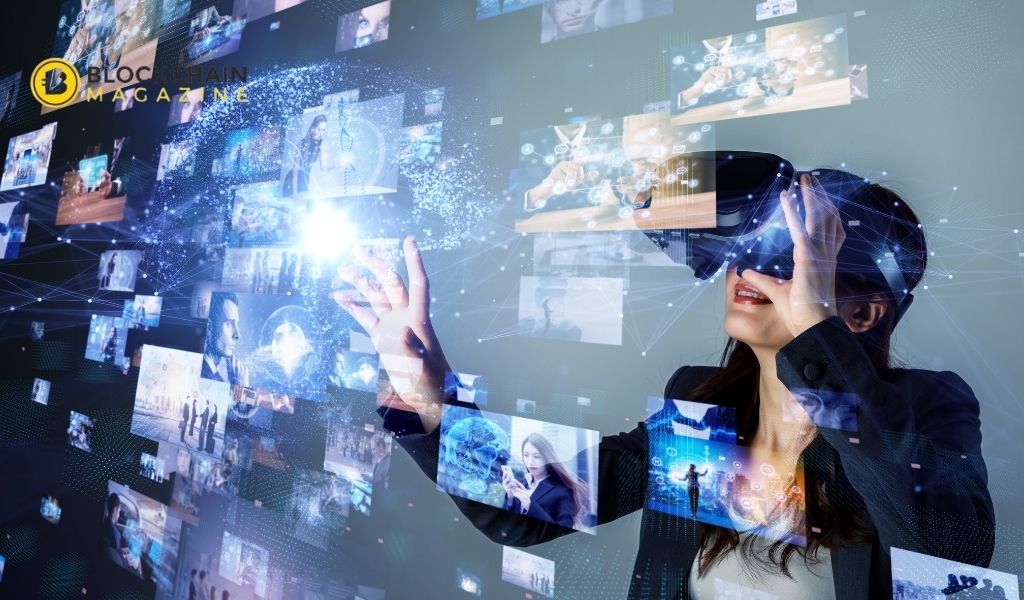Top 8 Ways Virtual Reality Campuses Promote Diversity
Many professionals have stopped going to the office every day since the pandemic began and either work totally from home or choose a hybrid work arrangement that combines the two. Virtual reality technology promises to impact the at-home working experience significantly, but we are still in the transition phase (VR). Whether you love or dislike virtual reality, it is impossible to dispute that working from home is now far more feasible thanks to the VR work environment.
So, who is in charge of VR workplaces? In 2021, Meta released Horizon Workrooms, a virtual reality team gathering area. Cisco also introduced Webex Hologram, an augmented reality solution for team meetings, a few months later in 2021. In 2022, Microsoft released Mesh for Microsoft Teams, enabling coworkers to communicate in fully immersive VR environments. Pixel Mat, Gather, Connec2, Glue, Immersed, MeetinVR, Meeting Room, Rumii, and vSpatial have all developed further VR work environments.
As a result, businesses should have numerous options when determining where to locate their virtual workplace, and market competition will ensure that consumers receive high-quality goods.
But we are concerned with something else. We have been investigating what the VR workplace means for diversity. A crucial query is that our workplace’s impact on inclusion is significant. The manner and location of employment impact how we engage, communicate, and collaborate with coworkers, according to research undertaken by a four-person team of psychologists. These elements work together to promote a sense of belonging.
The top eight ways virtual reality campuses might promote diversity.
FLEXIBILITY
Workers have benefited from improved flexibility because of the current hybrid work model, with a group of employees working in the office and others working remotely. However, hybrid working is connected to greater loneliness and a loss of team connectedness. In a survey conducted by OnePoll and Volley, a video chat company, 70% of respondents said that working remotely made them feel more lonely than working in an office. Virtual workplaces can be beneficial. No matter where they are located, employees can participate in the social working environment that they offer. This is especially helpful in meetings when remote workers have equivalent experience to those in the office. Whether they stay at home or go into the workplace, this can promote greater social interactions amongst coworkers and a more consistent experience.
ACCOMMODATIONS
Employees participate in a virtual workplace using a headset that covers the eyes and creates the illusion of three dimensions with stereoscopic lenses. This kind of technology should be able to meet the needs of every worker in inclusive virtual workplaces.
With the help of this new technology, it is possible to create accommodations allowing everyone to participate in the metaverse. For instance, a grassroots movement is working to develop technology that will allow individuals with varying degrees of motor ability to interact with an AI-powered avatar. This implies that they won’t need to use traditional motion sensors to move around in the VR world; instead, they may only move their eyes. It’s important to consider accommodations for additional disabilities, such as intellectual, sensory, or learning impairments.
COST
To make the technology more accessible, some of the biggest VR businesses are producing cheaper headsets. Currently, the cost of VR headsets ranges widely depending on how advanced the technology is. The cheapest option is Google Cardboard, and the most expensive is HTC Vive Pro. The VR experiences vary depending on this range. The more expensive headsets often come with better visual and audio features, making the experience more immersive.
Montgomery County Council President Hans Riemer promotes traffic safety at the Street Smart Virtual Reality Challenge – a visual education effort to reduce the annual spike in pedestrian crashes as rush hour becomes darker. pic.twitter.com/rcpG2Kgbn4
— Montgomery County MD (@MontgomeryCoMD) November 8, 2018
Does this affect inclusion in any way? Making sure that socioeconomic position does not affect who can engage in the metaverse is crucial. An organization must standardize by delivering the same technology to all employees because coworkers using less expensive headsets may enjoy a worse VR experience.
Also Read: How Will The Metaverse Developers Change Education?
REPRESENTATION
An avatar serves as a person’s representation on a virtual work campus. Most avatars are built on resizable human representations resembling cartoon characters. There must be possibilities for various forms of self-expression for true inclusion. One quintillion combinations of avatar features are now possible thanks to a recent modification to Meta’s avatar system. It appears that suppliers are taking this seriously. To avoid giving some people disproportionate options, the company must make sure that most combinations reflect all types of people.
Additionally, users have the option to create non-human avatars, which could lessen the focus on demographics. This may make it possible to give more credence to what people say instead of how they appear. Instead of the present “mirrortocracy,” in which coworkers are unwittingly favored for being identical, this can advance merit-based judgments in the workplace.
REGULATION
When considering the new legislation, it is important to consider how workplace misconduct will be addressed in this new environment. The working regulations that apply in the metaverse should also be considered. It is crucial to avoid workplace wrongdoing in VR as unrelated to the “real world” and ignoring it.
For instance, the Horizon Worlds recently enabled an optional safety feature called “safe zone,” where avatars can’t be touched inside a set perimeter surrounding them, in response to recent reports that women were subjected to sexual harassment.
VR will make it easier to perpetrate crimes like cybercrime through new channels. The metaverse is a new digital area where such crime can occur, and the cybercrime sector generates $1.5 trillion in revenue annually. Identity theft or data breaches involving personal information could happen. Organizations should set up protocols to respond quickly to cyber misbehavior to stop these crimes.
GOVERNANCE
To ensure that all users are treated fairly in VR, governance is crucial. Users would have rights and be able to vote on the regulations governing acceptable behavior in VR in this democratic process. According to a new report from experts in China and Canada, blockchain technologies may be used to moderate VR technology material.
There are drawbacks to this procedure: If moderation is completely optional, there can be problems with choosing. If particular groups of people control a VR environment, it might also result in biased workplace norms. The alternative is for governance to be carried out by a centralized body. This can also be a problem if the centralized authority is exercising its power in a discriminatory manner that opposes inclusive workplace policies.
Organizations must think carefully about which kind of governance could be appropriate for them, given the associated risks. The decentralized voting process might be effective if a company is far along in its diversity and inclusion journey.
COMMUNICATION
According to research, language can affect how included people feel at work. Colleagues who find it difficult to participate at work owing to language barriers fully report feeling left out. VR might offer a solution to this. A language translation tool, for instance, is one of the things Meta is developing. It would translate between all languages in real-time. This would make it possible for people to collaborate in the metaverse directly, even when using different languages. People would have the exceptional chance to work in their mother tongue and fully participate in all workplace activities, eliminating language barriers.
However, for this to happen, we need improvements in machine translation technologies and more data from the languages we have little knowledge and access. This kind of technology might only be accessible for a few more widely spoken languages, including English and Spanish, due to the underrepresentation of many other languages in natural language processing data sets.
PERSONALIZATION
According to a recent research report, working in virtual reality allows employees to customize their workspace through a reality distortion filter where they can see things and content differently from other employees.
There is no need for discussion, for instance, if your favorite color is yellow while your coworker prefers blue. If your colleague views the walls as blue and you see them as yellow, you can still work together in such an environment. This is a rare chance because, normally, choices of this nature are decided by management or a majority vote. Having control over your surroundings at work has been demonstrated to promote well-being through emotions of autonomy, and different environments work for different people in terms of enhancing productivity.
Stay informed with daily updates from Blockchain Magazine on Google News. Click here to follow us and mark as favorite: [Blockchain Magazine on Google News].
Get Blockchain Insights In Inbox
Stay ahead of the curve with expert analysis and market updates.
latest from tech
Disclaimer: Any post shared by a third-party agency are sponsored and Blockchain Magazine has no views on any such posts. The views and opinions expressed in this post are those of the clients and do not necessarily reflect the official policy or position of Blockchain Magazine. The information provided in this post is for informational purposes only and should not be considered as financial, investment, or professional advice. Blockchain Magazine does not endorse or promote any specific products, services, or companies mentioned in this posts. Readers are encouraged to conduct their own research and consult with a qualified professional before making any financial decisions.

 Bitcoin
Bitcoin  Ethereum
Ethereum  Tether
Tether  XRP
XRP  Solana
Solana  Dogecoin
Dogecoin  USDC
USDC  Lido Staked Ether
Lido Staked Ether  Cardano
Cardano  TRON
TRON  Avalanche
Avalanche  Wrapped stETH
Wrapped stETH  Chainlink
Chainlink  Toncoin
Toncoin  Wrapped Bitcoin
Wrapped Bitcoin  Sui
Sui  Shiba Inu
Shiba Inu  Hyperliquid
Hyperliquid  Stellar
Stellar  Polkadot
Polkadot  Hedera
Hedera  WETH
WETH  Bitcoin Cash
Bitcoin Cash  LEO Token
LEO Token  Uniswap
Uniswap  Litecoin
Litecoin  Pepe
Pepe  Wrapped eETH
Wrapped eETH  NEAR Protocol
NEAR Protocol  Ethena USDe
Ethena USDe  Aptos
Aptos  USDS
USDS  Internet Computer
Internet Computer  Aave
Aave  Cronos
Cronos  POL (ex-MATIC)
POL (ex-MATIC)  Mantle
Mantle  Ethereum Classic
Ethereum Classic  Render
Render  WhiteBIT Coin
WhiteBIT Coin  MANTRA
MANTRA  Monero
Monero  Dai
Dai  Bittensor
Bittensor  Artificial Superintelligence Alliance
Artificial Superintelligence Alliance  Arbitrum
Arbitrum  Ethena
Ethena 



